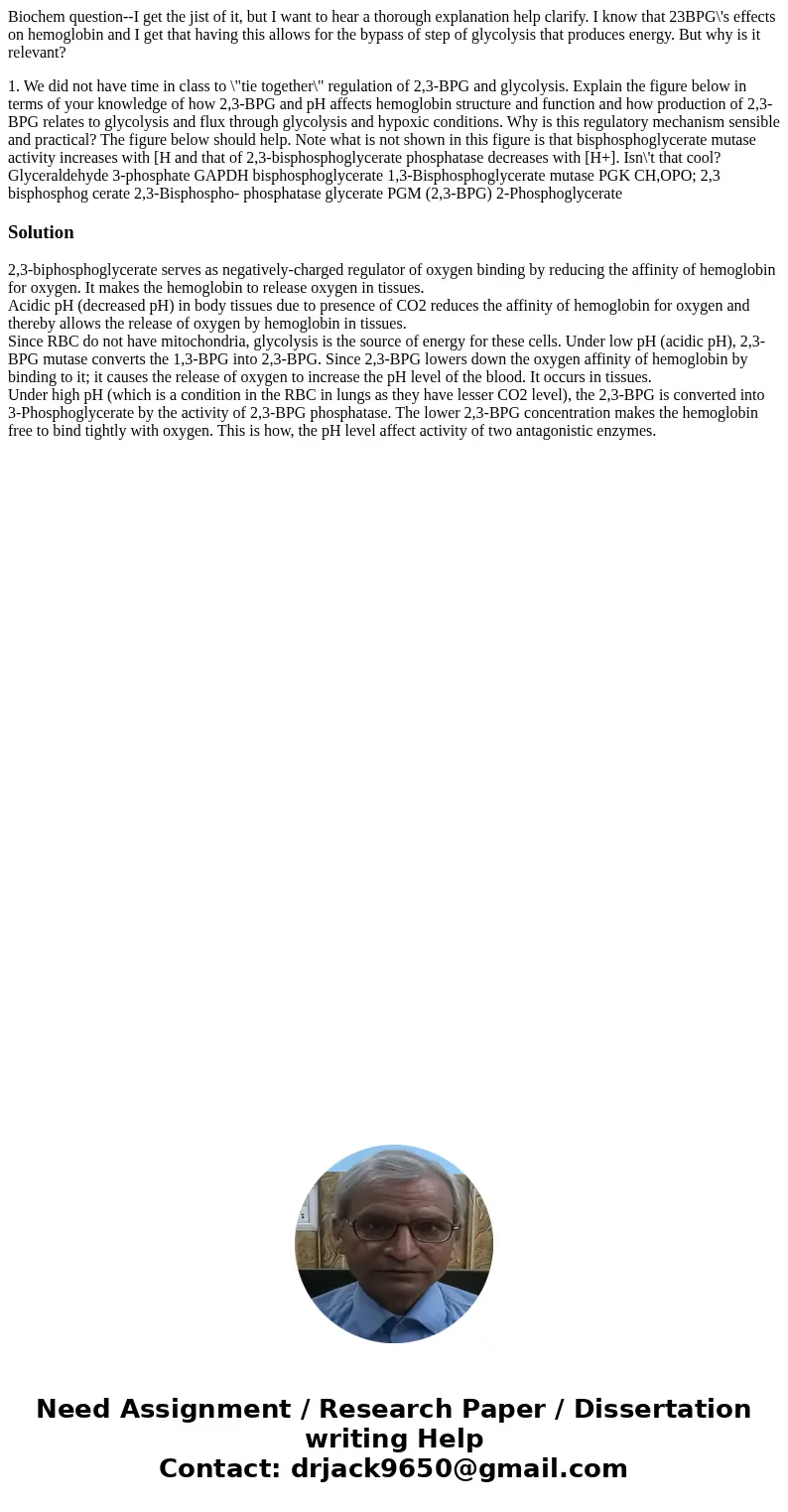Biochem questionI get the jist of it but I want to hear a th
Biochem question--I get the jist of it, but I want to hear a thorough explanation help clarify. I know that 23BPG\'s effects on hemoglobin and I get that having this allows for the bypass of step of glycolysis that produces energy. But why is it relevant?
1. We did not have time in class to \"tie together\" regulation of 2,3-BPG and glycolysis. Explain the figure below in terms of your knowledge of how 2,3-BPG and pH affects hemoglobin structure and function and how production of 2,3-BPG relates to glycolysis and flux through glycolysis and hypoxic conditions. Why is this regulatory mechanism sensible and practical? The figure below should help. Note what is not shown in this figure is that bisphosphoglycerate mutase activity increases with [H and that of 2,3-bisphosphoglycerate phosphatase decreases with [H+]. Isn\'t that cool? Glyceraldehyde 3-phosphate GAPDH bisphosphoglycerate 1,3-Bisphosphoglycerate mutase PGK CH,OPO; 2,3 bisphosphog cerate 2,3-Bisphospho- phosphatase glycerate PGM (2,3-BPG) 2-PhosphoglycerateSolution
2,3-biphosphoglycerate serves as negatively-charged regulator of oxygen binding by reducing the affinity of hemoglobin for oxygen. It makes the hemoglobin to release oxygen in tissues.
Acidic pH (decreased pH) in body tissues due to presence of CO2 reduces the affinity of hemoglobin for oxygen and thereby allows the release of oxygen by hemoglobin in tissues.
Since RBC do not have mitochondria, glycolysis is the source of energy for these cells. Under low pH (acidic pH), 2,3-BPG mutase converts the 1,3-BPG into 2,3-BPG. Since 2,3-BPG lowers down the oxygen affinity of hemoglobin by binding to it; it causes the release of oxygen to increase the pH level of the blood. It occurs in tissues.
Under high pH (which is a condition in the RBC in lungs as they have lesser CO2 level), the 2,3-BPG is converted into 3-Phosphoglycerate by the activity of 2,3-BPG phosphatase. The lower 2,3-BPG concentration makes the hemoglobin free to bind tightly with oxygen. This is how, the pH level affect activity of two antagonistic enzymes.

 Homework Sourse
Homework Sourse